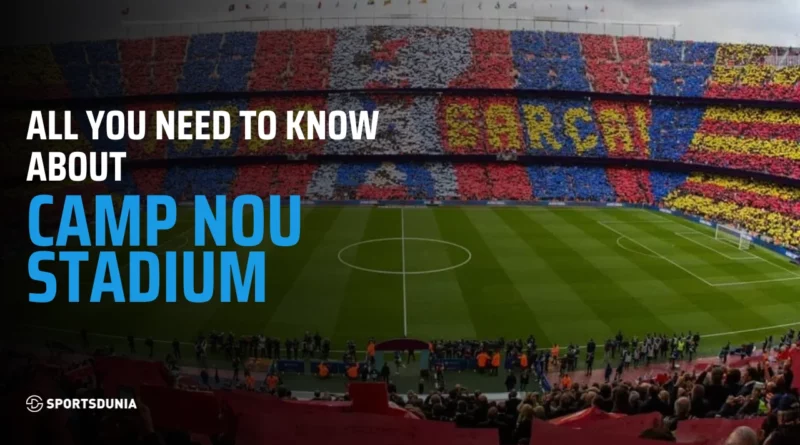Camp Nou Stadium: capacity, size, events, tickets and legacy
The Nou Camp, now known as the Spotify Camp Nou, is one of the world’s most famous football stadiums, and it is one of the living emotions of what football means to the world. It is located in the heart of Catalonia, in Barcelona. Currently, Camp Nou is the largest stadium in Europe and the fourth largest globally. It has served a legacy of over 65 years, giving fans unforgettable memories.
Some of the greatest players in history have played at the iconic stadium since its inception in 1957. With a seating capacity of almost 100,000 people, the atmosphere created in the stadium feels unreal when experienced, making it one of the key tourist attractions in Spain as well. The modern era for Camp Nou has been marked by financial instabilities with FC Barcelona, resulting in its naming rights being bought by the music streaming company Spotify in 2022.
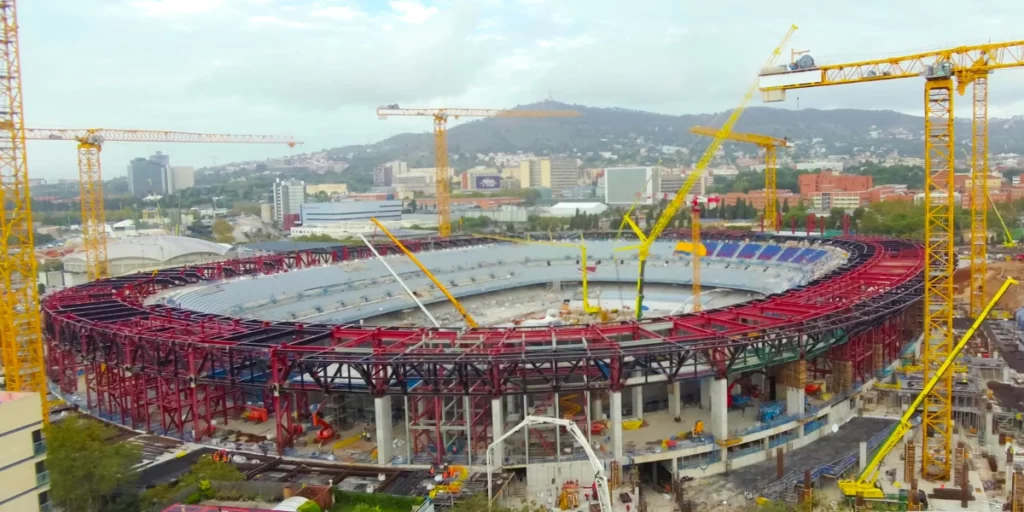
In its glorious 65-plus-year history, the stadium has seen many incredible highs and some painful lows. Let us discover everything there is to be known about Camp Nou Stadium today.
| Stadium Name | Spotify Camp Nou |
| City | Barcelona, Catalonia, Spain |
| Area | Catalonia |
| Association | FC Barcelona |
| Home to | Barcelona Catalonia national team Barcelona Women |
| Capacity | 105,000 |
| Pitch Size | 105 m × 68 m (115 yd × 74 yd) |
| Major Events | 1984 Copa del Rey Final, 1982 FIFA World Cup, Coldplay – Music of the Spheres World Tour (2023) |
Overview of Camp Nou Stadium
Serving people since 1957, the Spotify Camp Nou is an emotion of the game, which has, time and again, given fans moments to believe that venues do add to the magic of the game. It has a seating capacity of 99,354 people, making it the fourth-largest stadium in the world. The stadium started renovating in 2023 to upgrade its facilities and has witnessed countless legendary moments in the game.
Some of the world’s greatest players, Johan Cruyff, Diego Maradona, Ronaldinho, Lionel Messi, and others, have played at the stadium as their home. The stadium is also a symbol of national pride for Catalan fans. It has also hosted several high-profile international tournaments like the 1982 FIFA World Cup and the 1964 European Nations’ Cup, as well as many major club finals.
Importance in Football History
Camp Nou has been a sight to behold ever since it was inaugurated. It is not only FC Barcelona’s home but a venue where atmospheres transcend all experiences’ boundaries. Their first expansion happened in 1982, increasing the capacity to approximately 121,401 fans. During this era, Camp Nou was one of the largest stadiums in the world. The expansion mainly happened during the 1982 FIFA World Cup, where Belgium shocked Argentina in a 1-0 opening match.

Camp Nou also hosted football at the 1992 Summer Olympics and several iconic matches. Barcelona’s legendary home comeback (Remontada) against PSG in the Champions League, where they scored in the dying seconds of the game to complete one of the most impossible turnarounds ever in football.
Camp Nou has also played a massive role in not just the sporting aspect of the nation but also its political spirit. During the Franco regime, the stadium served as an expression for the revival and promotion of Catalan culture and identity. Through Barcelona’s support, football became a voice for the suppressed. To maintain its image as one of the best stadiums in the world, Camp Nou is undergoing significant renovations, so they have also signed a multi-million dollar deal with Spotify and others.
ALSO READ: Wembley Stadium: capacity, size, events, tickets and legacy
The Old Camp Nou Stadium
History of the Original Camp Nou Stadium (1957-2023)
Officially inaugurated in 1957, the Camp Nou symbolized Catalan culture and spirit from the beginning. It was built mainly to serve as the home of FC Barcelona and originally had a seating capacity of 106,146 people. Barcelona moved from their previous home, Les Corts Stadium, which had a capacity of 93,053 people.
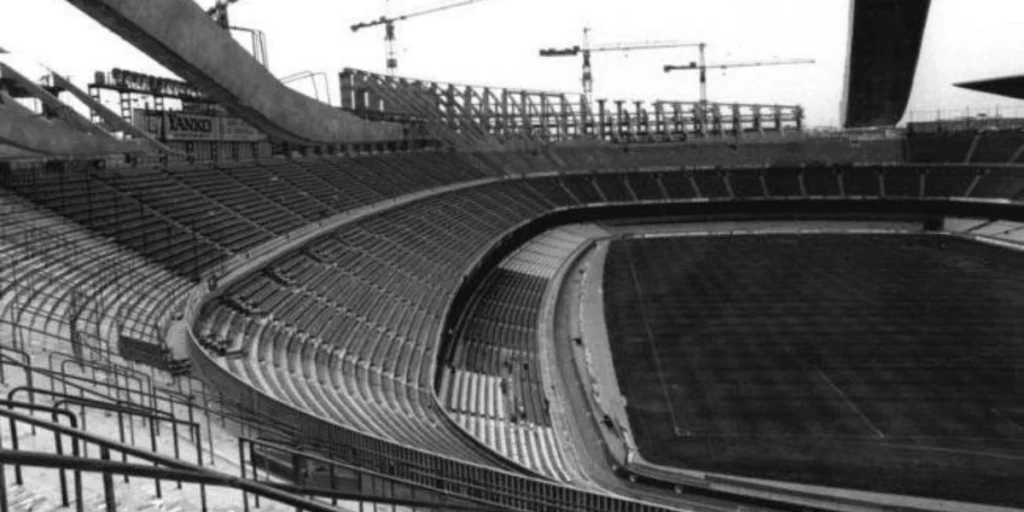
Camp Nou has witnessed legendary Barcelona teams. During its early era, it set a record for attendance with 120,000 people attending the Barcelona vs Juventus 1986 European Cup Quarter-finals. Over the years, Camp Nou has been consequential in the development of the sport, with Barcelona always being at the forefront of tactics that other top teams have tried to adapt.
From witnessing old greats like Ronaldo Koeman, Romario, Maradona, or Cruyff to new age legends like Xavi, Iniesta, and Messi, Camp Nou continues to serve the highest quality football experience possible for fans.
Legacy
While Camp Nou is set for another renovation to revive and get a new identity, it will always be the place that correctly justified Barcelona’s motto of “Mes que un club,” which means “More than a club.” This is adept for Barcelona and Catalonia’s struggle to separate from dictators in Spain and promote their own culture. It has hosted some legendary El-Clasico clashes and Champions League finals, several memorable national team matches, and concerts with the biggest pop stars in the world.
Whether it was Pep Guardiola’s historic tiki-taka playing team of the 2008-09 season or Ronald Koeman’s goalscoring ability as a defender, Camp Nou served its fans with magical moments throughout its history. Even more so when Ronaldinho made his way to Barcelona, it completely changed the club’s trajectory. His magic on the ball resonated with what Camp Nou expected. It was often a sight for standing ovations with the crowd, appreciating moments of pure magic and elegance without bias.
Location and Design of the Old Camp Nou Stadium
The Camp Nou was initially built to provide an unparalleled sporting experience for loyal Barcelona supporters. Considering this, it was located in the Les Corts district in Barcelona, Spain, only a few kilometers from the city center. This made the stadium accessible to local fans, traveling fans, and tourists.
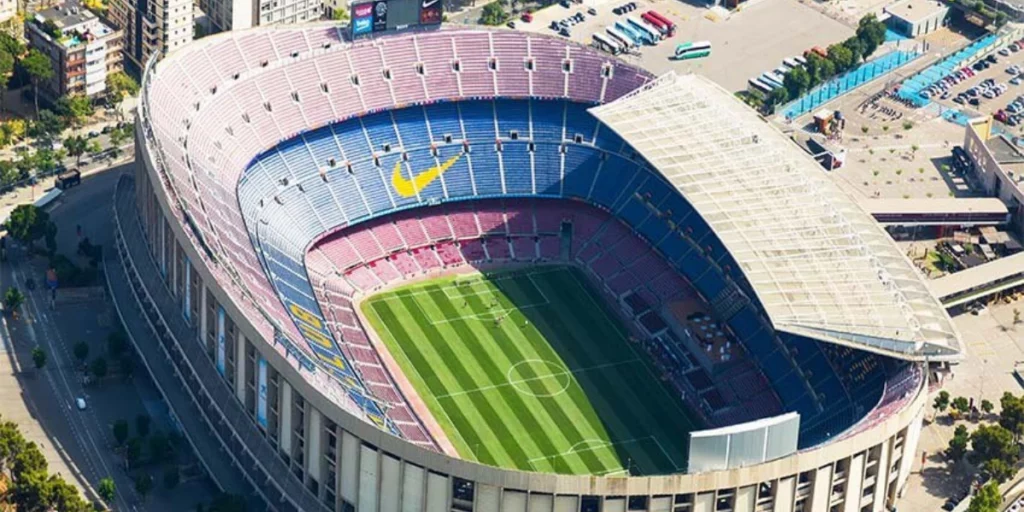
The chief architects of the iconic venue were Francesc Mitjans, Josep Soteras, and Lorenzo García-Barbón, making the stadium a modern marvel of its time. It was designed like a bowl with an open terrace, which provided a clear view from every seat. It has a three-tier structure, an architectural innovation, and the main grandstand(Tribuna), which offers covered seats and a dedicated VIP area.
Francesc Mitjans Miro was Camp Nou’s lead architect and wanted to create a spacious, modern structure reflecting Barcelona’s ambitions. He was a relative of the Barcelona president Francesc Miro-Sans, who had complete faith in Mitjans skills. Josep Mauri contributed to designing the public areas around the Montjuic area and maintaining the stadium’s structural integrity given its colossal size.
Lorenzo Garcia provided technical expertise and managed the logistics during the construction, particularly given its innovative three-tier design. The stadium took almost 3.5 years to build, beginning on 28 March 1954.
It cost over 285 million pesetas, which exceeded their original budget of 66 million pesetas, and the construction was also delayed several times due to the club facing financial challenges and issues with the design. Still, it was finally completed on 24 September 1957; the inaugural match was played against Warsaw, which Barcelona won 4-2 thanks to goals from Eulogio Martinez. The stadium’s original name was Estadi del FC Barcelona, and the name Camp Nou was adopted in 2001.
Thousands of fans attended the inauguration day of Camp Nou as it coincided with the La Merce festival, the patron saint of Barcelona. The ceremony began with a religious service and blessing on the stadium per Catalan traditions, followed by a parade, Sardana dancers, and Castellers. The stadium’s plans were ambitious and put Barcelona in serious debt, delaying its opening, but the club eventually recovered it. They had the most modern facilities for that time, with reinforced concrete used in their construction and hydraulic drainage systems on the pitch.
The first floodlights were not installed at the stadium until the 1970s when TV broadcasting became mainstream. The grass for the stadium game from Slovakia is known for its smooth texture, and the pitch sits below the ground level, allowing perfect visibility to all spectators from all angles. The field has a pitch size of 105 x 86 meters and is known for the perfect grass conditions it offers players for matches.
The stadium’s museum, training grounds, and administrative office surround it, making it a multi-functional sports complex.
Iconic Football Events at the Camp Nou

Camp Nou has organized several vast moments of the sport and has left a mark on the sport’s history. Since its inception in Barcelona, it has hosted the 1972 European Cup Winners’ Cup Final, which is, to this day, regarded as one of the most thrilling finals of all time. Rangers emerged as champions after a hard-fought 3-2 victory over Dynamo Moscow.
The decade’s second biggest match after multiple El-Clasicos was the opening match between Belgium and Argentina in the 1982 FIFA World Cup. Belgium surprised the defending champions with a 1-0 victory. Camp Nou hosted the 1989 European Cup final between AC Milan and Steaua Bucuresti, ending in an Italian masterclass of 4-0 to win the trophy.
Camp Nou is etched in the hearts of fans worldwide for the thrilling 1999 Champions League final between Manchester United and Bayern Munich. Commonly known now as “Fergie Time” or the dying seconds of the match, the Red Devils scored twice in injury time to defeat the German giants to complete the first-ever treble by an English club. The game left everyone stunned, with the Bayern players distraught on the field minutes after the final whistle in disbelief at the result as fans cheered on, creating a scene straight out of a movie in the final.
The highest recorded El-Clasico score for FC Barcelona over the rivals Real Madrid also came at the Camp Nou on 29 November 2010, which exemplified the football masterclass by Pep Guardiola.
The most recent fixture that lives on in football fans’ memories is the Remontada against Paris Saint-Germain in the 2017 UEFA Champions League Semi-Final. Barcelona made a comeback by winning the fixture after being 4-0 down in the first leg, marking one of the most unbelievable comebacks in football history.
The New Camp Nou Stadium
Construction and Opening of the New Camp Nou and its Features
The New Camp Nou, a part of Barcelona’s Espai Barca project, was a redevelopment project for the stadium to enhance its global image and update it with modern facilities. Barcelona aims to maximize fan experience with the construction that began in June 2023 and is expected to be completed by 2026, hoping to make Camp Nou the most advanced stadium in the world.
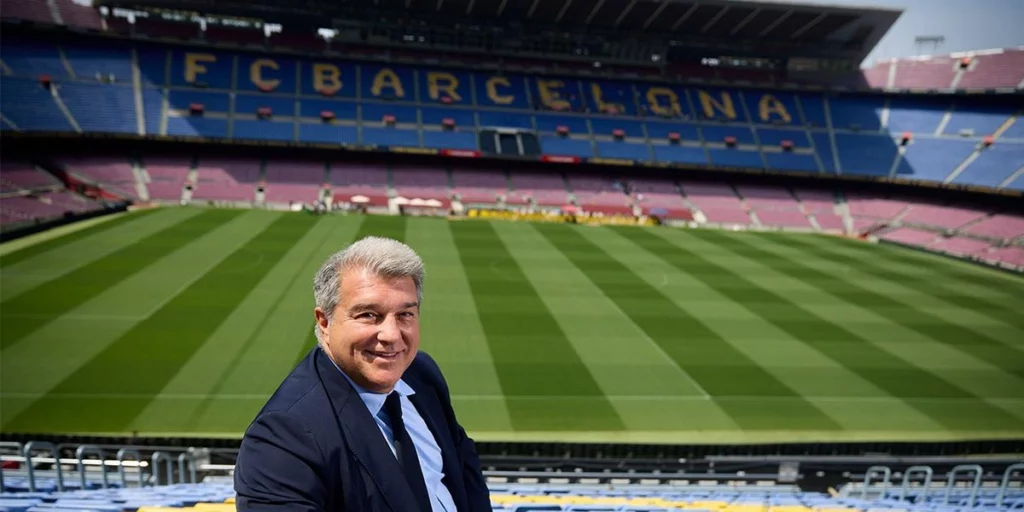
Barcelona will increase the stadium’s capacity to 105,000 seats through the project and update all other areas. Barcelona are playing at the Estadi Olimpic Llus Companys in Montjuic for their home matches. The most anticipated feature making rounds on the internet is the new roof Barcelona plans to add to Camp Nou, which would be 360-degree and enhance the acoustics on match days.
The seats will be more comfortable and broader, with enhanced accessibility options for fans with disabilities or reduced mobility. One of the key features of the new stadium is that it will be a smart stadium with high-speed WIFI and an augmented reality experience. They are also focused on making the new stadium completely eco-friendly with solar panels and rainwater collection systems installed alongside energy-efficient lighting.
The new Spotify Camp Nou will have upgraded VIP, Sky Boxes, and a premium restaurant. Their museum will be upgraded to include immersive experiences celebrating the club’s rich history. They will also install a new merchandise megastore in the stadium, making it a year-round tourist destination.
New Camp Nou Stadium Capacity and Field Size
The new stadium will meet the highest standards set by FIFA and UEFA, qualifying for the Category 4 or Elite Stadium specifications, making it available to host the most prominent fixtures in the sport. It will have a hybrid natural grass system with synthetic fibers for durability and performance throughout the year.
The dimensions will be 105 meters x 8 meters, the standard field size that FIFA sets. To prevent waterlogging, the stadium has a state-of-the-art modern pitch drainage system, and lights that can host light shows single-handedly.
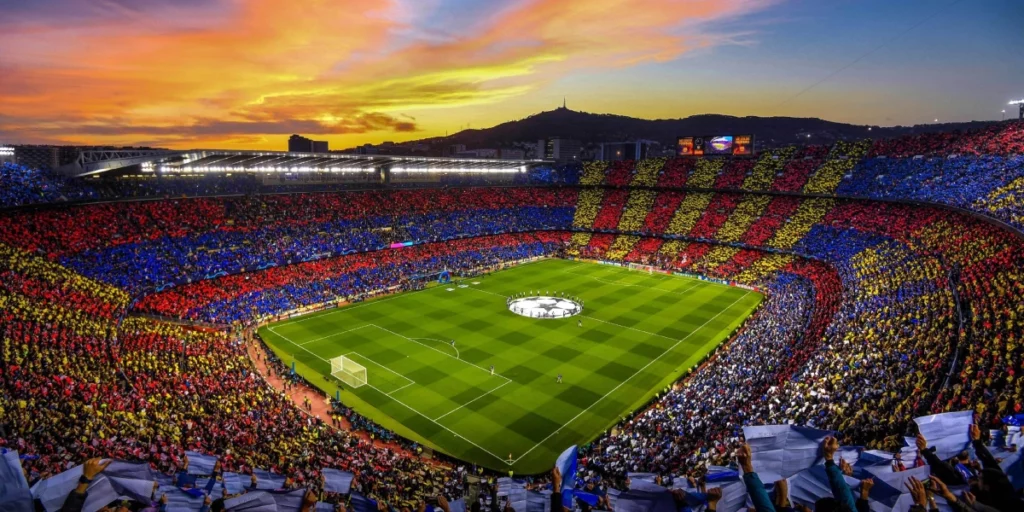
Barcelona will increase the stadium’s capacity to 105,000 seats through the project and update all other areas. Barcelona are playing at the Estadi Olimpic Llus Companys in Montjuic for their home matches. The most anticipated feature making rounds on the internet is the new roof Barcelona plans to add to Camp Nou, which would be 360-degree and enhance the acoustics on match days.
Tickets and Pricing
How to buy Camp Nou Stadium Tickets
While getting tickets for Camp Nou is not particularly easy, given the vast waitlist of fans wanting to experience the marvelous stadium, it can be done through multiple channels. The most reliable source is the official Barcelona website, where tickets for La Liga, UEFA Champions League, and Copa del Rey matches are available, along with stadium tours and other special events.

The website is highly user-friendly, allowing fans to choose their tickets through an interactive 3D experience and receive e-tickets through email. Another way is through the FC Barcelona application, which offers personalized notifications for upcoming events and unique features for season ticket holders.
People wanting to get a hardcopy ticket can do so at the Camp Nou ticket office, where it is advised to visit during office hours and be present in advance in cases of high-profile matches like El Clasicos or Champions League fixtures. Then, there are authorized resellers like Ticketmaster, allowing fans to choose from multiple areas in the stadium.
| Competition | Category | Price Range (Adults) |
|---|---|---|
| Club Competitions | ||
| Lateral (Main Stand) | €90 – €160 (Regular Matches) / €160 – €380 (High-Profile Matches, UCL, Finals) | |
| Gol (Behind the Goal) | €60 – €110 (Regular Matches) / €110 – €270 (High-Profile Matches) | |
| Tribuna (Covered Stand) | €110 – €220 (Regular Matches) / €220 – €450 (High-Profile Matches) | |
| Upper Tiers (General Stand) | €30 – €70 (Regular Matches) / €70 – €140 (High-Profile Matches) | |
| International Competitions | General Access | €25 – €60 |
| Premier Area | €70 – €140 | |
| VIP or Executive Lounge | €250 and above | |
| Concerts or Other Events | General Access | €30 – €100 |
| Premier Area | €150 | |
| VIP or Executive Lounge | €350 and above |
For other major events like concerts or marriages, third-party organizers set the prices, which are subject to change. However, the VIP seats on such occasions often cost more than €1,000 or more.
Accessibility Facilities at Camp Nou
Camp Nou offers an all-inclusive experience for people from all walks of life. The stadium has undergone constant renovations to help the physically challenged or people with disabilities tread comfortably through the walls of the historic location. There are reserved seats for wheelchair users and their friends, with over 250 seats spread across the stadium, mainly around the lower tier, to offer a close view of the action.
There are also multiple areas for the entry of people with disabilities and elevators specifically for them on different stadium levels. They have accessible restrooms with handrails and proper space for their equipment. The stadium also provides an audio description device for visually impaired fans to feel and live the live commentary of the match. Hearing loops are installed in several stadium areas for hearing-impaired fans or those using hearing aids.
Apart from such facilities, there are also trained personnel at work to assist disabled fans and a dedicated helpline number for those seeking assistance. There are reserved parking spots at the main entrance, with public transportation also equipped with ramps or priority seating. The best feature is also the special discount for disabled fans and their companions, who often receive free or discounted-price on tickets depending on match availability.
Visiting Camp Nou Stadium
Tips for Attending Football Matches
Arrive early at the stadium to experience a hassle-free entry. Volunteers will be available at every turn to guide the visitors.
For obvious reasons, hazardous objects are not allowed into the stadium.
Guided Tours: Exploring Camp Nou’s Football Legacy
The guided tour of the Camp Nou stadium can be purchased from the club’s main office or their website. This tour gives fans an inner look into the workings and makings of the historic club and covers the most exclusive areas of the stadium, offering a behind-the-scenes perspective. Fans enter the stadium through the player’s tunnel and can step onto the pitch to know how it feels to play at the venue.
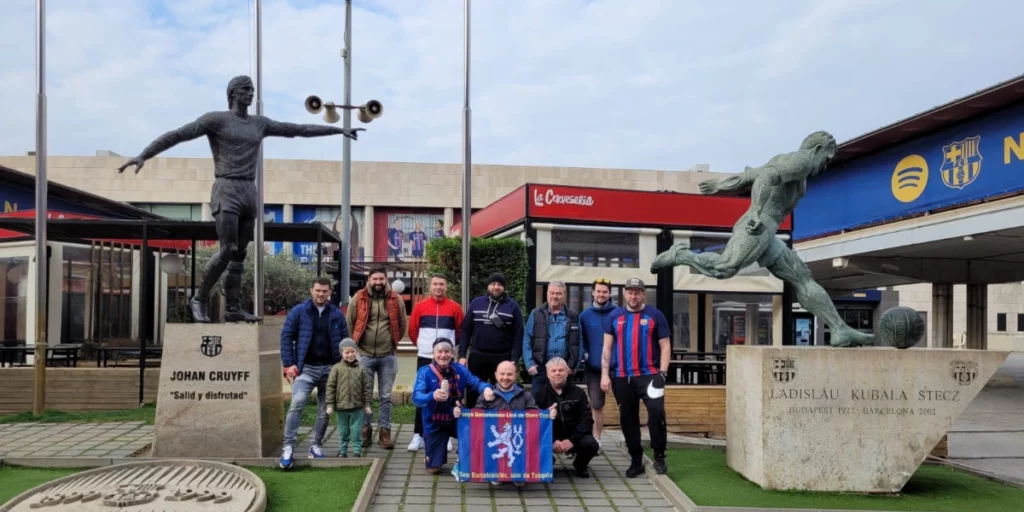
They are allowed entry into the legendary dressing rooms where famous tactics of the La Masia academy took shape and won trophies. They are then taken to the press room and conference room areas, where they are provided with a look and experience of the presidential box. Imagine watching a match from that setting; the experience is focused on showing tourists what it means to support such a big club, the passion, and the highs of football.
The last stop on the tour is the historic FC Barcelona Museum, where the Catalan club’s many trophies are proudly on display. From pictures of legends like Maradona, Ronaldinho, and Lionel Messi to legendary coaches like Johan Cruyff and Pep Guardiola, the museum takes you back into the golden eras of the club.
On national holidays and weekends, the tour is extended for longer hours for passionate tourists. However, it is advised to book tickets in advance as the peak period of the season is usually hectic. The Official website of FC Barcelona sells all the tickets firsthand.
Nearby Attractions for Football Fans
Apart from the stadium tour, the legendary La Masia academy is a short distance away and is known as a factory for definite football talent. It is considered one of the world’s best academies and has now been upgraded to a modern facility that has produced talents like Messi and Iniesta.
The serene Pedralber Royal Gardens, which Antoni Gaudi designed, is only ten minutes away. The gardens offer elegant landscapes filled with fountains and sculptures to spend some peaceful time on your tour of Barcelona.
Another iconic football stadium is the RCD Espanyol Stadium, located in the Cornella-El Prat area, giving a glimpse of Barcelona’s football culture. Another close visiting spot is the Canaletes Fountain on La Rambla, where Culers often gather before matches or to celebrate victories.
Camp Nou Stadium Events Beyond Football
While Camp Nou is mainly known as a hub of football, the massive stadium also can host events beyond football, further cementing its status as a global venue. Over the years, global stars like Michael Jackson performed at the venue for 95,000 fans on August 9, 1988, during his Bad World Tour. Bruce Springsteen was also a regular performer at the stadium giving great concerts during his Tunnel of Love Express Tour in 1988 and making his return with Magic Tour in 2008 after 20 years.
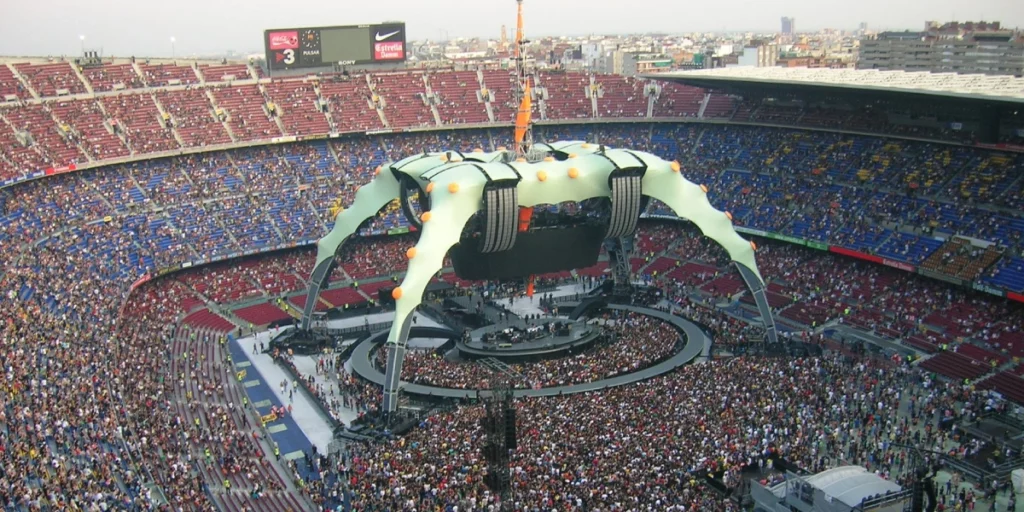
The Irish band U2 360 degree performed at the Camp Nou on 30 June 2009 and again on 2 July 2009, catering to a combined crowd of over 180,000 fans. The stadium has also been a venue for significant cultural and religious gatherings, with Pope John Paul II celebrating Mass in November 1982. Enriched in Catalan history was the “Concert for Freedom,” which drew a crowd of over 120,000 people and was held in June 2013, advocating for Catalan solidarity and independence, where numerous well-known artists performed. Recently, Barcelona went into a 5-year agreement with FEVER to enhance the visitor experience at the stadium by making it a cultural point.
The Legacy of Camp Nou Stadium
The legacy of the Spotify Camp Nou is something every football fan knows, it is not just a stadium but an emotion. Serving as a historical symbol of Catalonia and football it has now been the home of FC Barcelona for over six decades being witness to some of the most iconic moments in the sport. It is the largest stadium in the continent and just the fourth largest in the world, standing tall throughout the test of time.
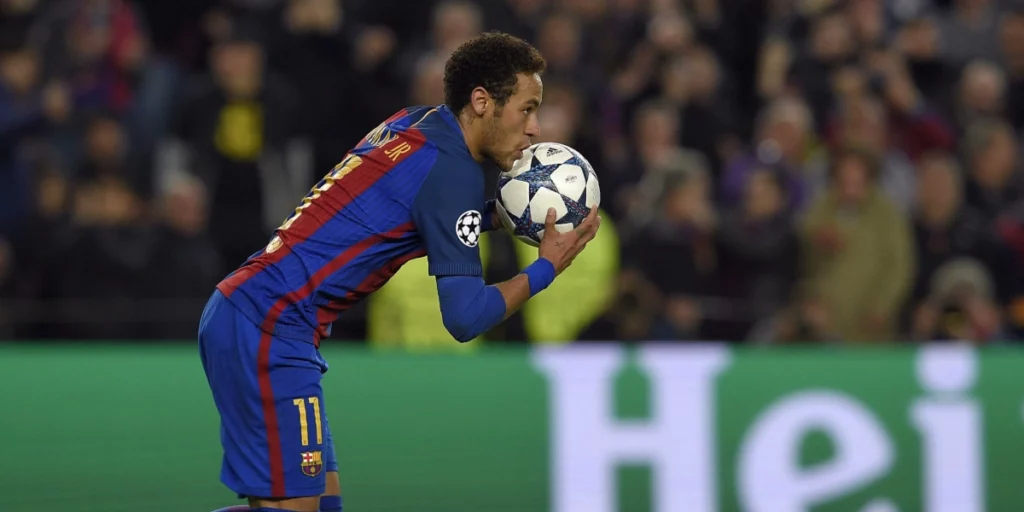
The Camp Nou has witnessed several generations of Barcelona greatness on its pitch. From Johan Cruyff’s ‘Dream Team’ to Pep Guardiola’s tiki-taka style of play, Camp Nou is a trademark in the game’s history. It has undergone several changes over the years, creating an atmosphere that could give goosebumps to anybody when it is complete. It embodies Barcelona’s motto, “Mes que un club,” which means it is more than a club, ideally with an experience for any neutral fan to attend a match at the venue and not feel amazed.
Conclusion
Camp Nou is a stadium of history, a cultural landmark, and an arena for greatness. Footballers grow up dreaming about someday playing at the legendary stadium or feeling the 80,000 eyes on them. It is a symbol of pride, discipline, and tradition, something that the upcoming generation of footballers in Barcelona are taught from a young age that there is a particular way to fit into the Barcelona way of football, one that is respectful of the beauty that Camp Nou is.
It has played a significant part in the history of the city and the country by hosting several outer football events and festivals. From religious gatherings to marriages and ceremonies, Camp Nou is a global venue that promises to create a lifetime memory for anyone who enters it.
FAQs
Q. Where is Camp Nou Stadium?
A. The Camp Nou Stadium is situated in Barcelona in Catalonia, Spain.
Q. Who plays at Camp Nou Stadium?
A. FC Barcelona’s home stadium is the Camp Nou.
Q. How many people does Camp Nou Stadium hold?
A. The Camp Nou can hold 105,000 people.
Q. How big is Maracana Stadium?
A. Camp Nou is 105 m × 68 m in dimensions
Q. Is Camp Nou Stadium covered?
A. No, but with renovations underway, a 360-degree roof is being installed in the stadium.
